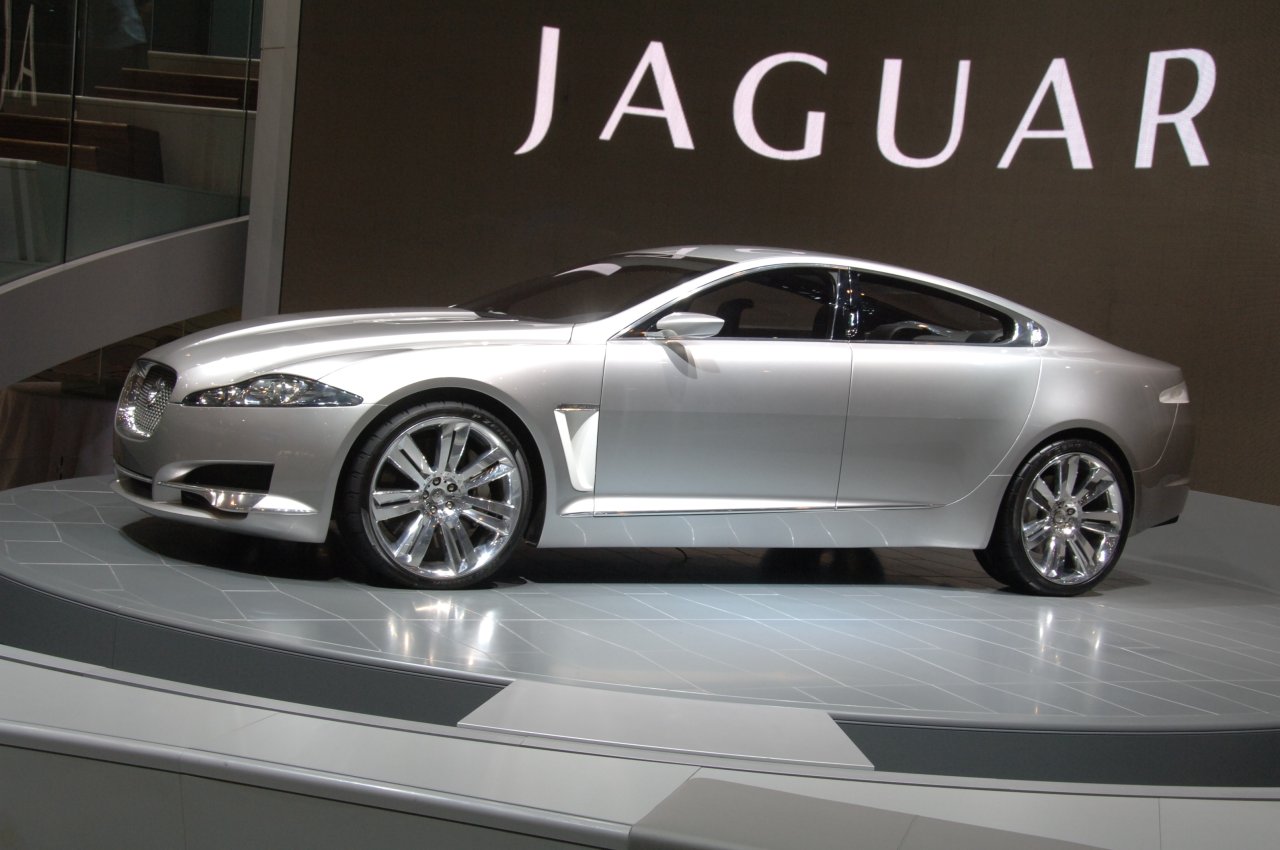2010 Jaguar XJ Pictures
2010 Jaguar XJ Pictures
2010 Jaguar XJ Pictures
2010 Jaguar XJ Pictures
2010 Jaguar XJ Pictures
2010 Jaguar XJ Pictures
2010 Jaguar XJ Pictures
2010 Jaguar XJ Pictures
2010 Jaguar XJ Pictures
2010 Jaguar XJ Pictures
2010 Jaguar XJ Pictures
Bold, confident face The face of the XJ is confident, with a wide front track and short overhangs contributing to the finely judged proportions. The nose of the car follows Jaguar's new design language, with a bold and assertive treatment: the powerful mesh grille and slim xenon headlamps creating a strong road presence. The strong, muscular lower half of the car is contrasted with the slim and graceful quality of the roofline, which takes inspiration from the original 1968 XJ saloon. The wrap-around rear screen reduces the visual weight of the pillars, and gives the impression of an exotic 'floating' roof. And the new Jaguar XJ doesn't just look sleek and streamlined: it is, alongside the XF, the most aerodynamic Jaguar ever. The car has a drag coefficient (Cd) of 0.29, and, equally importantly, outstanding high-speed stability. A key factor in achieving this highly efficient aerodynamic performance was the extensive use of Computational Fluid Dynamics (CFD) to refine the shape long before the car ever saw a wind tunnel. Taking the process pioneered on the XF programme to a new level of sophistication, more than 400 detailed CFD studies were performed during the initial design phase. Every area of the new Jaguar XJ - from the outer skin to the composite undertray to the fine grille meshes of the cooling system - was optimised using this process. Key areas included the profile of the rear decklid, which was engineered to ensure that the airflow was controlled without the need for a spoiler. As well as reduced drag and impressively low wind noise, the overall shape achieves aerodynamic loads that are carefully balanced between front and rear axles to ensure optimum handling balance and high-speed stability. Dramatic LED lights The rear end is notable for its pure, sculpted shape, with a conscious absence of unnecessary ornamentation. The sheet metal of the rear panel retains its pure form, with a single leaping Jaguar motif making a strong, confident statement. The LED light clusters wrap stylishly over the rear wings, and feature three dramatic red, vertical strips. Architectural interior design The overriding impression from the interior is a sense of personal space, a feeling enhanced by the clean, simple form of the leather-wrapped instrument panel sitting low across the vehicle. At the sides of the cabin, a bold architectural wood veneer sweeps forward from the doors to meet at the front of the car, emphasising the new Jaguar XJ's powerful, dynamic character. This linear, modern use of wood helps to create a truly welcoming environment. The panoramic glass roof has been from the outset an integral part of the design concept of the all-new Jaguar XJ. It enables a lower, more streamlined roofline, and also dramatically enhances the feeling of light and space within the car. The roof's opening mechanism slides the glass upwards and outwards, so that headroom is never compromised. A dark tint and reflective coating prevent the interior from overheating under strong sunlight, while twin electric blinds provide another level of privacy and sun screening. THE TECHNOLOGY In keeping with its position as the ultimate Jaguar saloon, the all-new Jaguar XJ pioneers the use of advanced new technologies, driver displays and infotainment systems that set an exciting new benchmark within its segment. As the driver is greeted by the signature Jaguar 'handshake' - the circular knurled aluminium rotary control of the JaguarDrive Selector™ rising into the driver's palm - stylish 3D animations materialise in the virtual instrument cluster and on the central Touch-screen, giving an immediate signal that the new Jaguar XJ takes a revolutionary approach to the way information is displayed in the vehicle. Sophisticated virtual instrumentation There is no physical instrument cluster display in the all-new Jaguar XJ. Instead, a 12.3-inch high-definition screen, which uses sophisticated - and beautifully detailed - virtual instruments, provides all of the functions performed by traditional dials. Jaguar's designers have also taken advantage of the freedom provided by virtual instrumentation to help prioritise the most useful information as well as creating a real sense of theatre for the driver. As the XJ starts, three virtual dials build before your eyes: the centre dial houses a speedometer, flanked on the right by a rev counter and on the left by an information window with fuel and temperature gauges. To maximise clarity, the display employs a 'spotlight' effect to highlight the areas showing the most important information, such as the current speed or engine revs. When required - for example, if fuel is running low, or the driver is selecting a radio station - the rev counter fades away to be temporarily replaced by the required warning message or menu. The prioritisation goes to another level when the driver who is looking for even more sporting performance and handling selects the XJ's Dynamic mode. In this case, the dials assume a sporting red hue and feature a bold gear position indicator which glows red as you reach the rev limiter.










